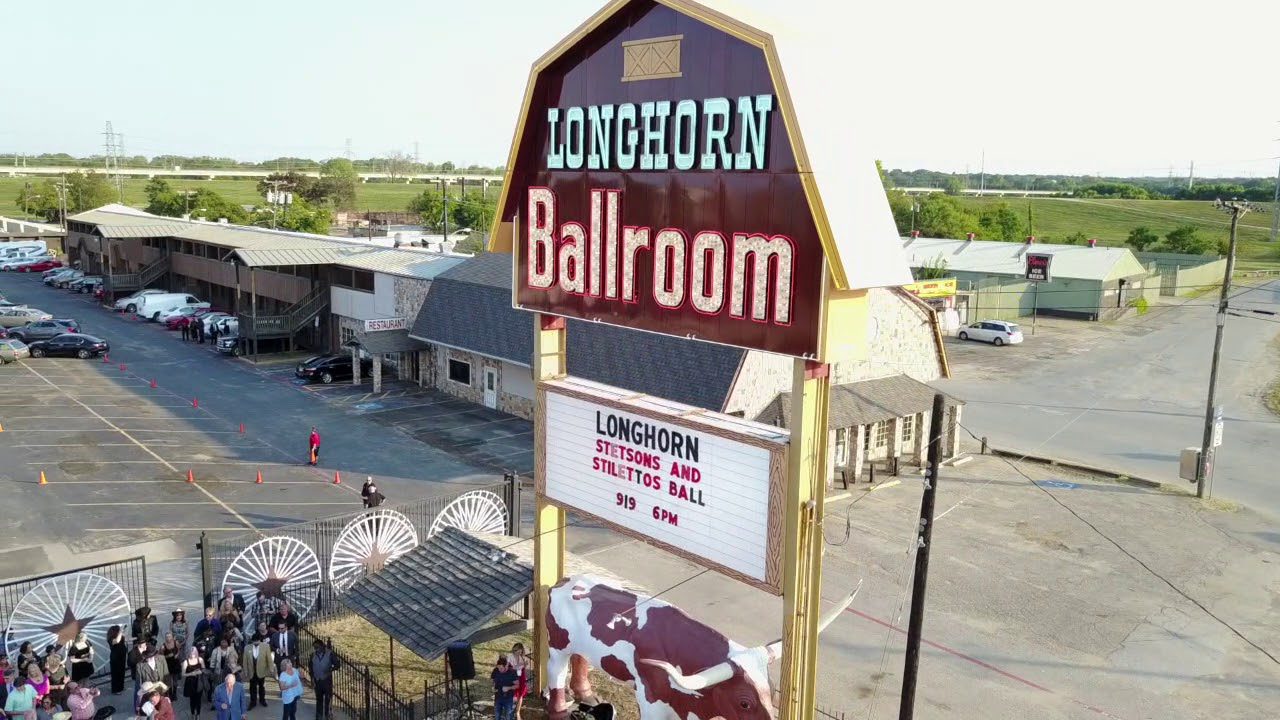The new owner of a historic Dallas landmark is hoping to bring the venue back to its former glory, with some help from the city of Dallas.
Edwin Cabaniss and his business partners are asking the City of Dallas to ante up $4 million in economic incentives to help restore and expand the Longhorn Ballroom, one of the city’s most threatened historic properties, according to the non-profit organization Preservation Dallas.
The 25,000-square-foot iconic music venue and dance hall was built in 1950 as a performance venue for the legendary Western swing band Bob Willis and His Texas Playboys. The venue was originally called the Bob Willis Ranch House.
In 1958, the property was sold to a new owner and was renamed the Longhorn Ballroom, a nod to the 21-foot statue of a longhorn that resides on the property. It continued to function primarily as a venue for country music. Over the years, many country western performers of note have played at the Longhorn Ballroom, including Loretta Lynn, Merle Haggard, Buck Owens, Conway Twitty, Willie Nelson, George Jones, and Waylon Jennings.
During the 1950s, one of the venue managers did something unusual for the times: he opened the doors of the Longhorn Ballroom to the major black artists of the day, offering soul and blues on Sunday and Monday nights while presenting country music bands the rest of the week. That manager was Jack Ruby, who later became infamous for the murder of Lee Harvey Oswald.
During the 1960s and ’70s, black artists such as BB King, Charlie Pride, Nat King Cole, Ray Charles, James Brown, and Al Green made frequent appearances at the Longhorn Ballroom.
The venue changed hands several times over the years, and its operators branched out to offer many styles of music, hosting performers such as Selena, Patti Smith, Aerosmith, the Ramones, Stevie Ray Vaughan, the Red Hot Chili Peppers, and the Sex Pistols. It last functioned as a music venue in 2019.
More recently, the venue was used to host conventions, corporate events, weddings, quinceañeras, bar mitzvahs, charity events, and the like.
However, the property had fallen into disrepair and was at risk of demolition by the time Cabaniss made an offer on the property last fall.
Cabaniss and his investors intend to spend more than $14 million to restore and expand the Longhorn Ballroom and create a two-acre “backyard” event space next door. The six-acre property, located at 216 Corinth in the Cedars neighborhood, is surrounded by the Trinity River levee, making it a unique venue to hold outdoor events.
In addition to the ballroom, the property is also home to a 20,000-square-foot structure that could be used for office or retail space.
Cabaniss told The Dallas Morning News that he is asking the City to join the project as fundamental infrastructure issues need to be addressed.
“We don’t have curbs; we don’t have drainage; we don’t have any type of security lighting. These are basic amenities,” he said, adding that sidewalks would also be needed.
Cabaniss has an established track record with the City of Dallas and is well-known in the area for his restoration of the historic Kessler Theater, which he opened as a music venue in 2010.
Dallas Mayor Eric Johnson told the DMN last fall, “Edwin has done a great job with the Kessler Theater, and I am excited to see his plans to restore the historic Longhorn Ballroom — a hidden gem of Dallas. The venue is a living monument to our city’s rich music history, and it is clear that it still has tremendous untapped potential.”
David Preziosi, the executive director of Preservation Dallas, noted that returning the Longhorn Ballroom to its former glory would be a complicated project but expressed confidence that “together with Cabaniss and the full support of the city, as well as the preservation and cultural communities, this icon will surely come back to life.”
The Dallas City Council will vote on incentives for the project later this month.







Maybe you could get ole’Willie and SnoopDog to open her up
It’s Bob Wills , not Bob Willis.